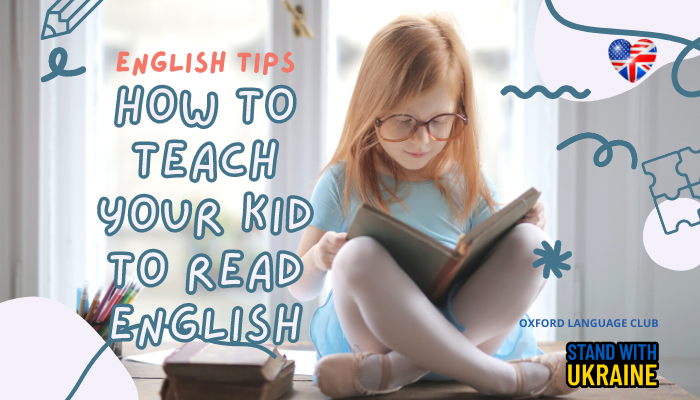Great site to keep my english skills updated for work and travel. I am really enjoying the lessons!
Maria C
 Argentina
Argentina


Most people don't think about the process of learning to read until they decide to start teaching their own children at home.
Contrary to what some people believe, learning to read is not a 'natural' process that happens all on its own. It's a complex one that requires the proper teaching of various skills and strategies, such as phonics (knowing the relationship between letters and sounds) and phonemic awareness.
The good news is that although reading itself is a complex process, the steps taken in order to build these skills are fairly simple and straightforward. In order to teach kids how to read and make it a positive and rewarding experience, try these simple and time?tested strategies below.
Here are 7 simple steps to teach your child to read at home:
1. Use songs and nursery rhymes to build phonemic awareness
Children's songs and nursery rhymes aren't just a lot of fun—the rhyme and rhythm help kids to hear the sounds and syllables in words, which helps them learn to read. A good way to build phonemic awareness (one of the most important skills in learning to read) is to clap rhythmically together and recite songs in unison. This playful and bonding activity is a fantastic way for kids to implicitly develop the literacy skills that will set them up for reading success.
2. Make simple word cards at home
Cut out simple cards and write a word containing three sounds on each one (e.g. ram, sat, pig, top, sun, pot, fin). Invite your child to choose a card, then read the word together and hold up three fingers. Ask them to say the first sound they hear in the word, then the second, and then the third. This simple activity requires little prep?time and builds essential phonics and decoding skills (helping them learn how to sound out words). If your child is just starting out with learning the letters of the alphabet, focus on the sound each letter makes, more so than letter names.
3. Engage your child in a print-rich environment
Create daily opportunities to build your child's reading skills by creating a print?rich environment at home. Seeing printed words (on posters, charts, books, labels etc.) enables children to see and apply connections between sounds and letter symbols. When you're out and about, point out letters on posters, billboards and signs. In time you can model sounding out the letters to make words. Focus on the first letter in words. Ask your child “What sound is that letter?” “What other word starts with that sound?” “What word rhymes with that word?”
4. Play word games at home or in the car
Building on from the previous step, introduce simple word games on a regular basis. Focus on playing games that encourage your child to listen, identify and manipulate the sounds in words.
5. Play with letter magnets
Middle vowel sounds can be tricky for some children, which is why this activity can be so helpful. Prepare letter magnets on the fridge and pull the vowels to one side (a, e, i, o, u). Say a CVC word (consonant-vowel-consonant), for example 'cat', and ask your child to spell it using the magnets. To help them, say each vowel sound aloud (/ayh/, /eh/, /ih/, /awe/, /uh/) while pointing at its letter, and ask your child which one makes a sound similar to the middle sound.
6. Read together on a daily basis and ask questions about the book
A lot of people don't realise just how many skills can be picked up through the simple act of reading to a child. Not only are you showing them how to sound out words, you're also building key comprehension skills, growing their vocabulary, and letting them hear what a fluent reader sounds like. Most of all, regular reading helps your child to develop a love of reading, which is the best way to set them up for reading success.
Strengthen your child's comprehension skills by asking questions while reading. For younger children, encourage them to engage with the pictures (e.g. “Do you see the boat? What colour is the cat?”). For older children, ask questions about what you've just read, like “Why do you think the little bird was afraid?” “When did Sophie realise she had special powers?”
7. Be patient; the best way to teach kids to read is to make it fun!
Every child learns at his or her own pace, so always remember the single most important thing you can do is to make it enjoyable. By reading regularly, mixing things up with the activities you choose, and letting your child pick out their own books occasionally, you'll instil an early love of reading and give them the best chance at reading success in no time.